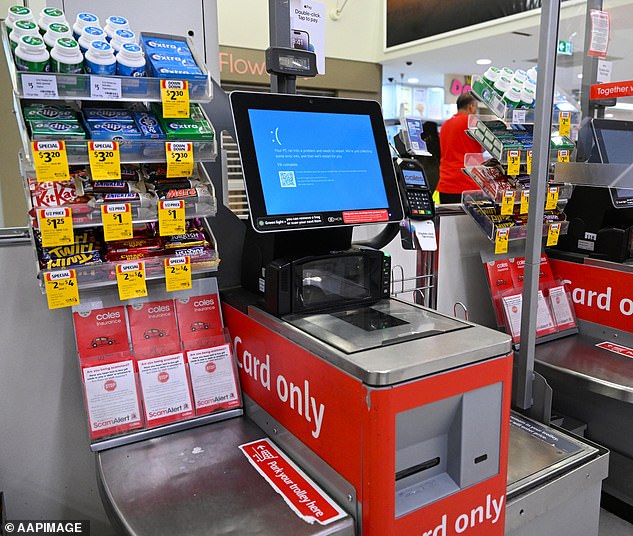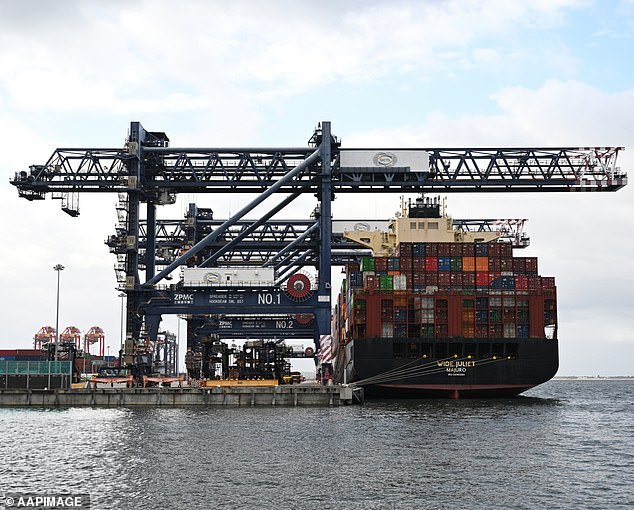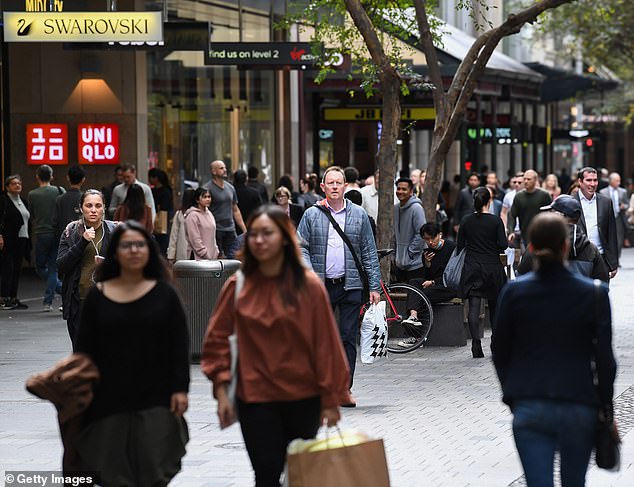There are fears that Friday’s global tech slump could push up the price of everyday goods, deepening Australia’s cost of living crisis.
Sanjoy Paul, Associate Professor of Operations and Supply Chain Management at UTS, and Towfique Rahman, Professor of Business Strategy and Innovation at Griffith University, have warned of the potential impact on the supply chain if Microsoft’s systems fail.
“Transportation systems in particular were hit hard,” the two academics wrote in The conversation.
The academics warned that the global computer outage could have knock-on effects and disrupt or delay shipping networks, air cargo services and transport logistics.
“In the wake of the blackout, both shipping companies and ports reported disruptions,” they said.
Courier company Parcelhero has warned that there could also be significant knock-on effects for air freight.
‘Other air freight experts have said a full recovery could take days or even weeks.’
Even before a botched software update by tech security firm CrowdStrike shut down computer systems around the world, global supply chains were under pressure — a major contributor to inflation.
Australia relies heavily on sea and air transport for common goods, which was severely impacted by the Crowdstrike service outage on Friday.

The CrowdStrike bug caused Microsoft systems to experience the dreaded “blue screen” error for hours on Friday. Many of the world’s leading companies are customers, including banks and transportation companies.
Supply chain issues have been a problem since border closures and lockdowns during the Covid pandemic brought trade to a standstill.
Added to this was the Russian invasion of Ukraine and, especially in Australia, tensions with China.
But because Australia is separated from much of the world by vast oceans, problems with transporting goods still persist.
Shipping routes in the Red Sea have been disrupted by attacks by Houthi rebels, forcing ships to take a longer route around Africa’s Cape of Good Hope to reach Asian ports.
Paul Zali, director of the Freight and Trade Alliance, said some in the industry were referring to the latest supply chain issues as a “COVID baby,” referring to rising freight costs during the pandemic.
“This is increasing costs and that will be passed on to consumers,” he told Sky News last week.
‘From candy to luxury items to medical products, you name it, it will all be trapped in them.’
Drewry’s benchmark World Container Index, a composite of container prices, has more than doubled since the beginning of May, lending weight to renewed concerns about the impacts of shipping on inflation.
Assistant Trade Minister Tim Ayres said: “Australia is at the end of the Southeast Asian archipelago.”
‘We are dependent on trade with the world and this has an effect on Australia.
‘Whether it’s congested container terminals in Singapore or Malaysia or more broadly in the region, this has an impact on our imports and our exports to the world.’

Container ships like this one are finding the Red Sea dangerous because of the continued success of Yemen’s Houthi rebels in using drones to attack shipping vessels.
The Albanian government focused on inflationary pressures it could control, Senator Ayres said, including delivering budget surpluses and cost-of-living relief “that does not increase inflation.”
The monthly inflation figures fueled fears of another interest rate hike or, more likely, that rates will stay high for longer.
The Australian Bureau of Statistics recorded a stronger-than-expected 4 percent increase in May, compared with 3.6 percent in April.
Much depends on June quarter inflation ahead of the Reserve Bank of Australia’s next interest rate meeting in August, where interest rates could rise again.

